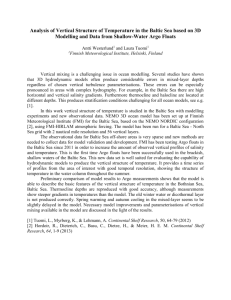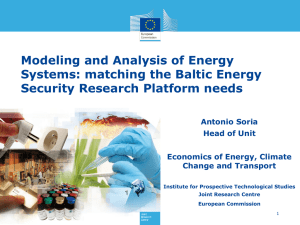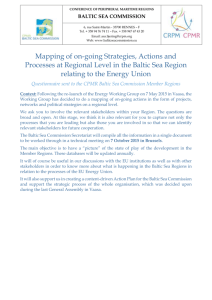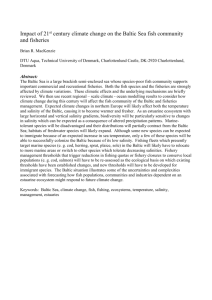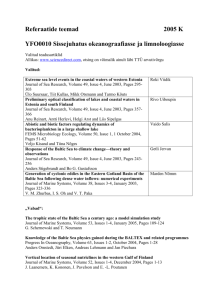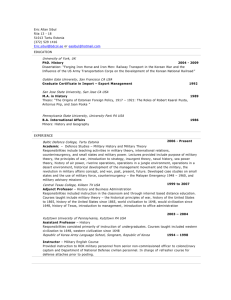successful completion of the HYPER cruise
advertisement
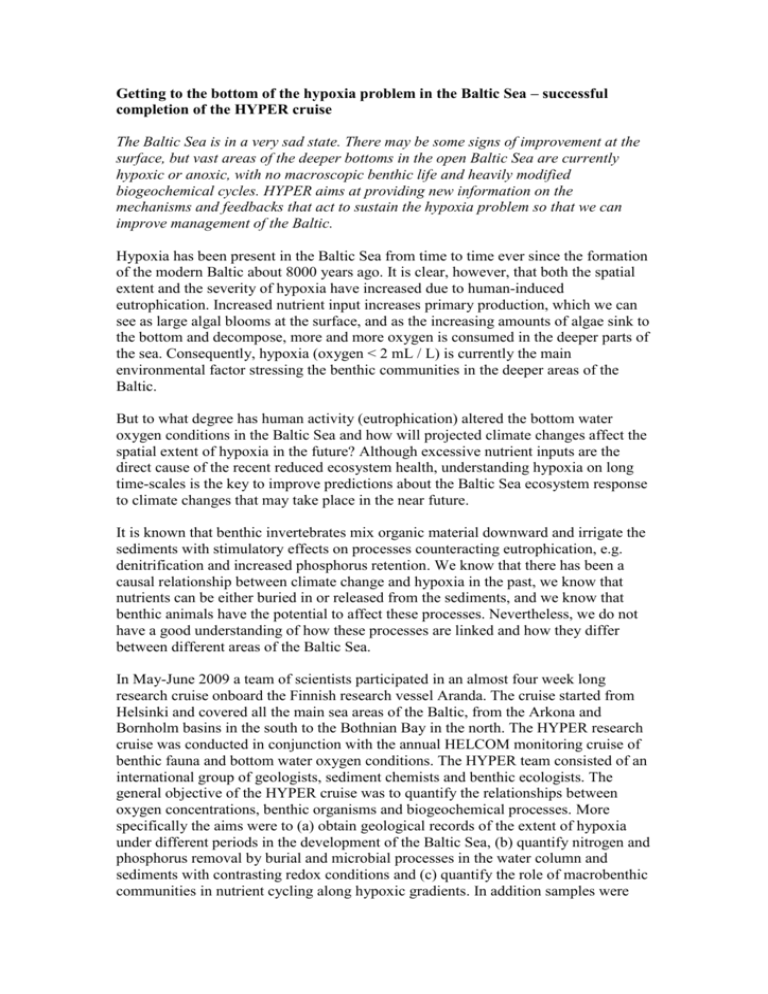
Getting to the bottom of the hypoxia problem in the Baltic Sea – successful completion of the HYPER cruise The Baltic Sea is in a very sad state. There may be some signs of improvement at the surface, but vast areas of the deeper bottoms in the open Baltic Sea are currently hypoxic or anoxic, with no macroscopic benthic life and heavily modified biogeochemical cycles. HYPER aims at providing new information on the mechanisms and feedbacks that act to sustain the hypoxia problem so that we can improve management of the Baltic. Hypoxia has been present in the Baltic Sea from time to time ever since the formation of the modern Baltic about 8000 years ago. It is clear, however, that both the spatial extent and the severity of hypoxia have increased due to human-induced eutrophication. Increased nutrient input increases primary production, which we can see as large algal blooms at the surface, and as the increasing amounts of algae sink to the bottom and decompose, more and more oxygen is consumed in the deeper parts of the sea. Consequently, hypoxia (oxygen < 2 mL / L) is currently the main environmental factor stressing the benthic communities in the deeper areas of the Baltic. But to what degree has human activity (eutrophication) altered the bottom water oxygen conditions in the Baltic Sea and how will projected climate changes affect the spatial extent of hypoxia in the future? Although excessive nutrient inputs are the direct cause of the recent reduced ecosystem health, understanding hypoxia on long time-scales is the key to improve predictions about the Baltic Sea ecosystem response to climate changes that may take place in the near future. It is known that benthic invertebrates mix organic material downward and irrigate the sediments with stimulatory effects on processes counteracting eutrophication, e.g. denitrification and increased phosphorus retention. We know that there has been a causal relationship between climate change and hypoxia in the past, we know that nutrients can be either buried in or released from the sediments, and we know that benthic animals have the potential to affect these processes. Nevertheless, we do not have a good understanding of how these processes are linked and how they differ between different areas of the Baltic Sea. In May-June 2009 a team of scientists participated in an almost four week long research cruise onboard the Finnish research vessel Aranda. The cruise started from Helsinki and covered all the main sea areas of the Baltic, from the Arkona and Bornholm basins in the south to the Bothnian Bay in the north. The HYPER research cruise was conducted in conjunction with the annual HELCOM monitoring cruise of benthic fauna and bottom water oxygen conditions. The HYPER team consisted of an international group of geologists, sediment chemists and benthic ecologists. The general objective of the HYPER cruise was to quantify the relationships between oxygen concentrations, benthic organisms and biogeochemical processes. More specifically the aims were to (a) obtain geological records of the extent of hypoxia under different periods in the development of the Baltic Sea, (b) quantify nitrogen and phosphorus removal by burial and microbial processes in the water column and sediments with contrasting redox conditions and (c) quantify the role of macrobenthic communities in nutrient cycling along hypoxic gradients. In addition samples were obtained to measure ecophysiological responses of fauna to hypoxia. The cruise was a great success and more work than originally anticipated could be completed. During the cruise a total of 85 stations were visited. HYPER successfully obtained 27 gravity long cores, collected samples for measurements of sediment chemistry and conducted experiments to measure benthic nutrient fluxes across gradients of oxygen and salinity at 26 stations throughout the Baltic Sea. The results from the cruise this year showed that the oxygen conditions in the Åland Sea and in the Gulf of Bothnia were still good and the benthic fauna was healthy. However, like in previous years, the oxygen conditions in the Baltic proper were very poor and below around 80-90 meters depth, there was no oxygen and no macroscopic life, and in most of the deeper areas there was toxic hydrogen sulphide in the bottom water. Results from the cruise show that the overall oxygen conditions in the Baltic has in fact deteriorated since 2008 (early summer comparison), which last year was one of the worst on record. Most notably conditions in the southern Baltic have deteriorated and the spatial extent of hypoxic water increased (Figure?) It will take a couple of years to analyse and synthesise all the data collected during the research cruise, but already the initial results indicate that the interactions between benthic animals and sediment chemistry are complex and highly variable both between sub-basin in the Baltic and between hypoxic and normoxic areas within the same basin. The cruise was a success and the combined data and the subsequent modelling is likely to provide very important new insights into how the hypoxia in the Baltic Sea works. Eventually this information will be provided to decision makers and hopefully used for better management of nutrient loadings into the Baltic Sea. Alf Norkko - Marine Research Centre, Finnish Environment Institute Lovisa Zillén - Department of Geology, Lund University Joanna Norkko - Marine Research Centre, Finnish Environment Institute Sampling onboard R/V Aranda during the HYPER cruise

